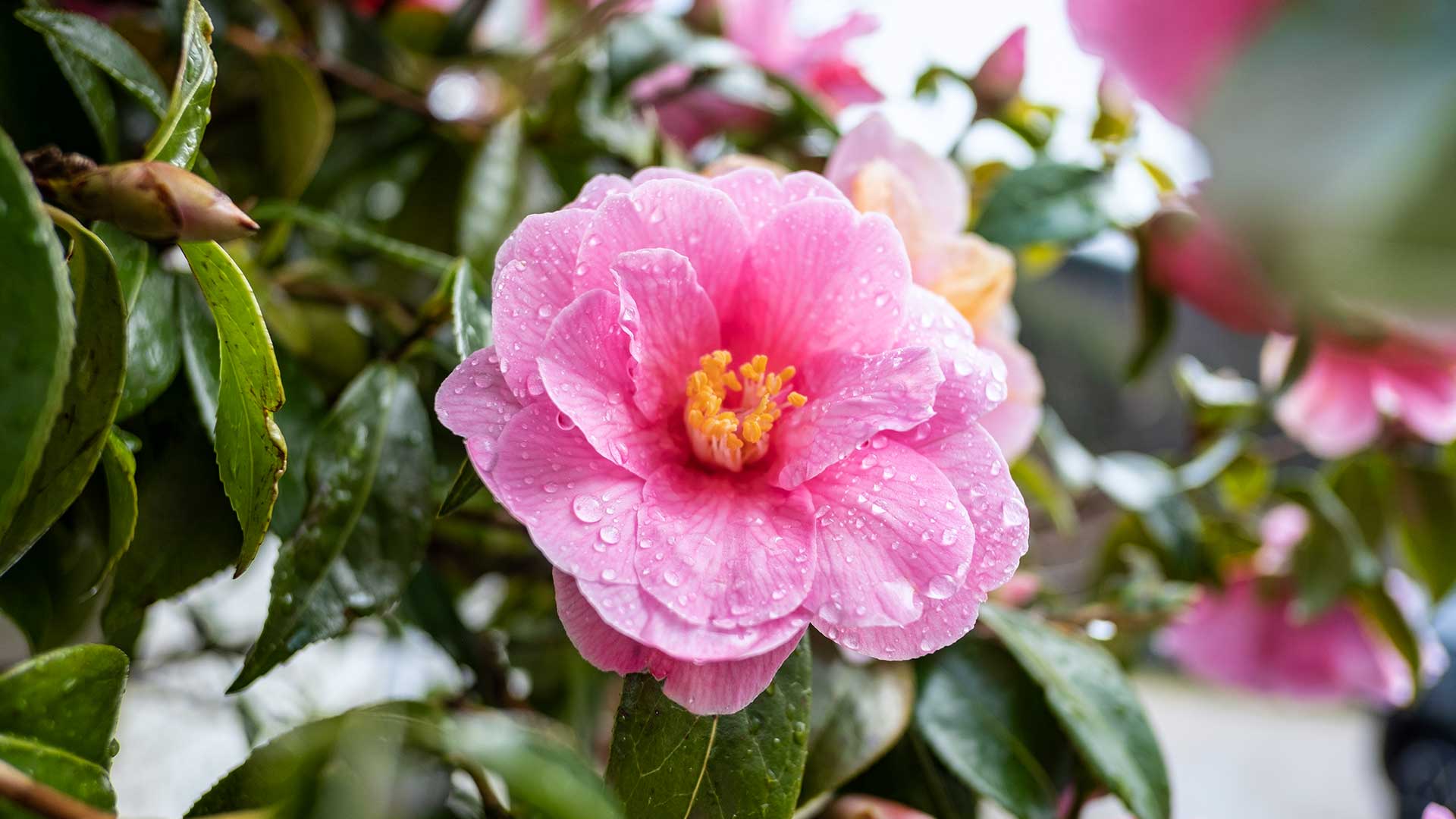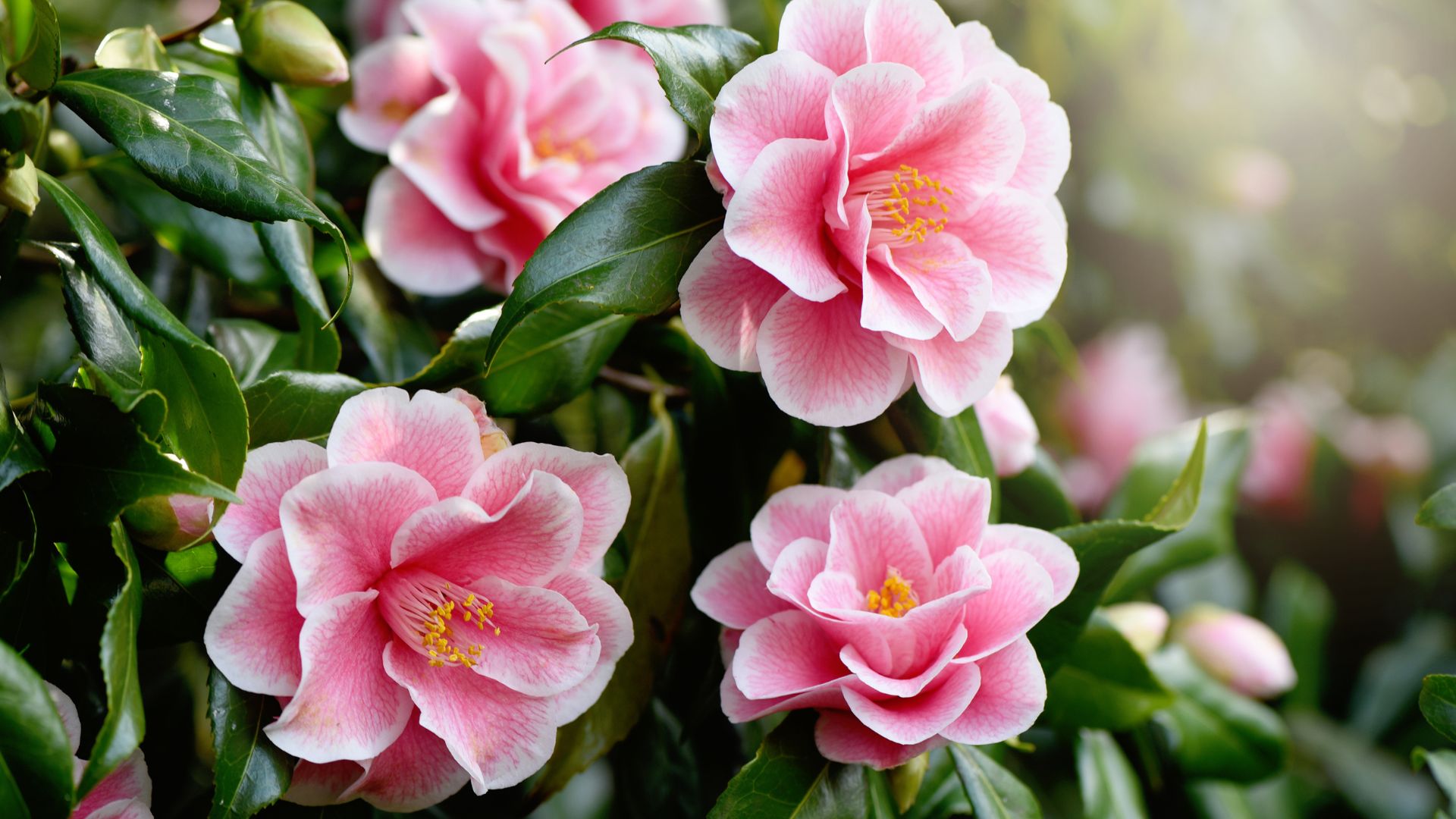
Camellias are the divas of the garden world: they burst into bloom in winter and early spring, demand our admiration with their showy white, red, and Barbie pink petals, and then... well, then they leave you wondering what on earth to do next.
If you’ve ever found yourself staring at your camellia’s fading petals with a mix of awe and mild panic, you’re not alone; plenty of people have been busily searching for what to do with camellias when they finish flowering.
It makes sense; evergreens are one of those timeless garden trends we can't get enough of, and camellias pack an extra punch with their showy display of hot house-style flowers each year – at a time when very little else is flowering, no less.
Much as we tend to treasure and lavish love upon our beloved snowdrops and daffodils after flowering, then, so the same is true of our camellias. But, while we know to plant them in ericaceous soil, keep them well watered over the summer, and feed them with ericaceous fertiliser come springtime, many of us have yet to read up on what to do with their blooms after they’ve faded...
What to do with camellias after flowering: expert advice
One of the most alluring plants to liven up your garden, camellias look like they should be hard to grow – but nothing could be further from the truth: they're a pretty easy one to look after, even for the very greenest of gardeners, so long as you do your research.
"Camellia are superb evergreen shrubs that provide interest all year and pretty flowers in spring. There are even some which will flower in autumn," promises Morris Hankinson, director of Hopes Grove Nurseries.
That being said, Morris reminds us all that we can't expect plants to thrive without at least a little TLC... even if they are as easy-going as a camellia.
"With colours ranging from white to pink, bright to dark red and yellow, it’s incredibly important to look after camellias even after they have flowered to make sure they flower again the following year."
So, with that in mind, what to do with camellias after flowering?

1. Start deadheading
While many plants, including crocuses after flowering, should be left well alone, the same cannot be said of camellias. In fact, if you're looking for a simple answer when it comes to what to do with camellias after flowering, it's this: get in there and start deadheading.
"After flowering, the old blooms can be removed which keeps the plant looking neat and will stop the energy going into setting seed," says Morris.
2. Prune if needed
Much as you should prune roses to maximise blooming, Morris says the best time to prune your camellias is after they've finished flowering.
"If the plant needs pruning after flowering is the ideal time without cutting back too much or into the old wood which is where new buds will form," he explains.
"Simply remove any of the three Ds – that's dead, diseased or damaged stems – and give it a light tidy."

3. Feed and mulch
Just as you should do with bluebells after flowering, many experts will advise you to feed and mulch your camellias after their blooms have faded and they've endured a prune.
"After pruning, a balanced slow-release fertiliser can be applied for plants that prefer acidic soil," says Morris (we recommend something like Miracle-Gro Azalea, Camellia and Rhododendron Soluble Plant Food from Amazon).
"This will help the plant to thrive and encourage new, strong growth."
After this, Morris advises you to add a layer of mulch around the base of your camellia and give it a good water.
FAQs
How to treat camellias after flowering?
If you're not sure what to do with camellias after flowering, you're not alone; plenty of gardeners have pondered how to help these stunning plants do their thing once the blooms have faded.
"The most common question we receive about camellia, is ‘Why isn’t my camellia flowering’ and the answer is almost always because it hasn’t been watered, especially during the summer months," says Morris Hankinson of Hopes Grove Nurseries.
"It’s easy to forget to water a shrub when it’s not flowering but the plant still needs water to thrive."
He adds that camellias do not like waterlogged conditions, so there is no need to water during the wetter months... especially if you want to avoid overwatering them.
When should you cut back camellia?
Knowing when to cut back camellia is key to keeping these showy flowers happy. Thankfully, the answer is simple enough: wait until they've finished flowering (which usually means late spring to early summer – think May or June in the UK.
Why? Well, because camellias start forming next year’s flower buds not long after they drop their petals. This means that, if you go at them with the secateurs too late in the season, you’ll be hacking off all those future blooms before they even get a chance to shine. And no one wants that.
That being said, camellias aren’t the kind of plants that need a dramatic chop every year. They like a light touch – just snipping off any dead, damaged, or unruly branches to keep them looking their best. If yours has gone full jungle mode, you can do a harder prune, but brace yourself: it might sulk for a season before bouncing back.
So, in short: snip after the flowers fade, keep it gentle, and your camellia will reward you with another year of show-stopping blooms. Easy, right?
Do you deadhead camellias?
Not sure what to do with camellias after flowering? While you don't necessarily have to deadhead them, it'll get those mushy browning blooms off the plant and reduce the risk of fungal infections.
To that end, then, many experts recommend that you snip off the dead flowers where they join the stem – ideally with a pair of sharp, clean secateurs – if you want your camellia to thrive.
And just like that, you know what to do with camellias after flowering: deadhead, prune, feed, mulch, and water whenever they look thirsty over the drier summer months.
It might sound like lots of work, but it'll all be worth it when your camellia rewards you with that welcome pop of colour next year when the world is feeling particularly grey and bleak. We promise.







